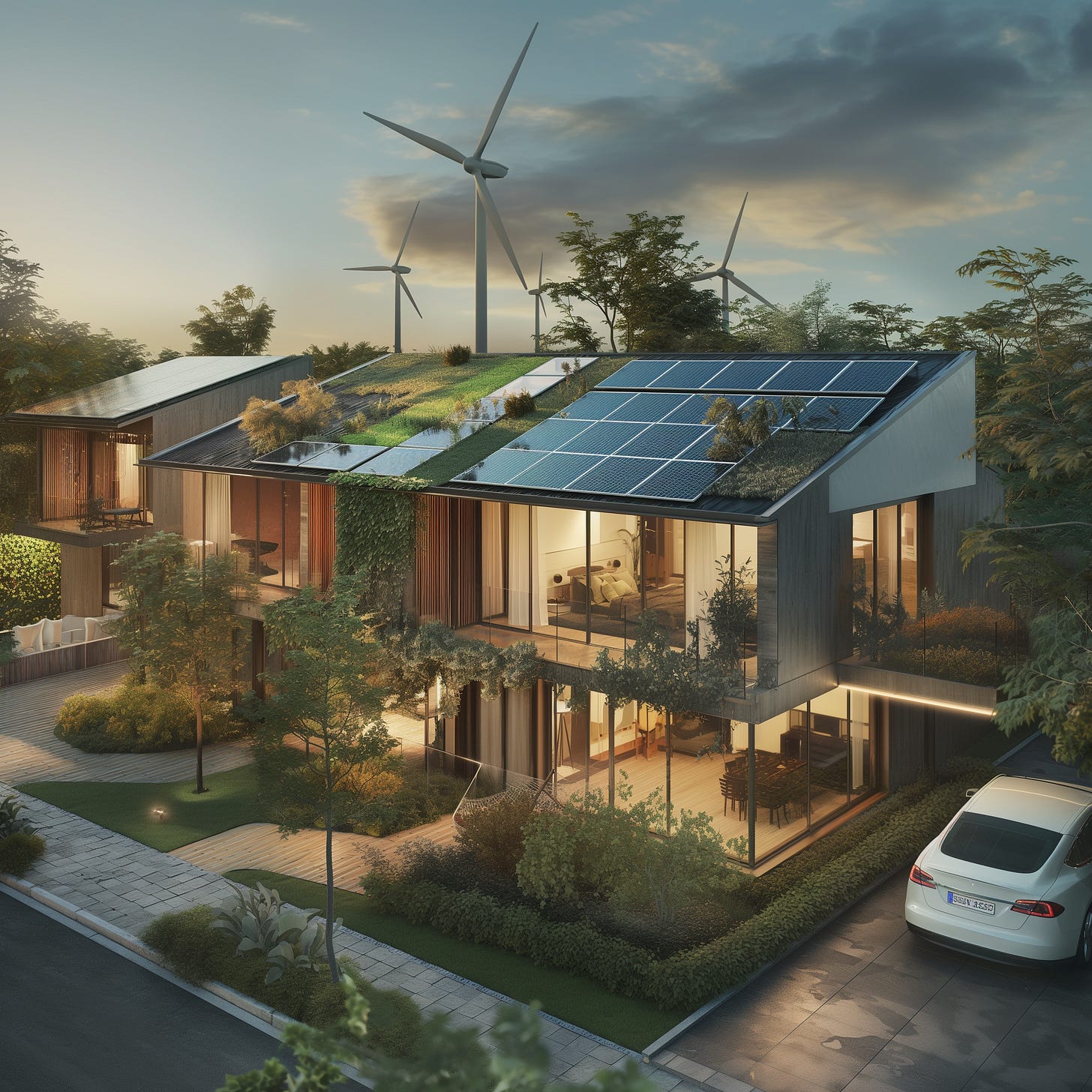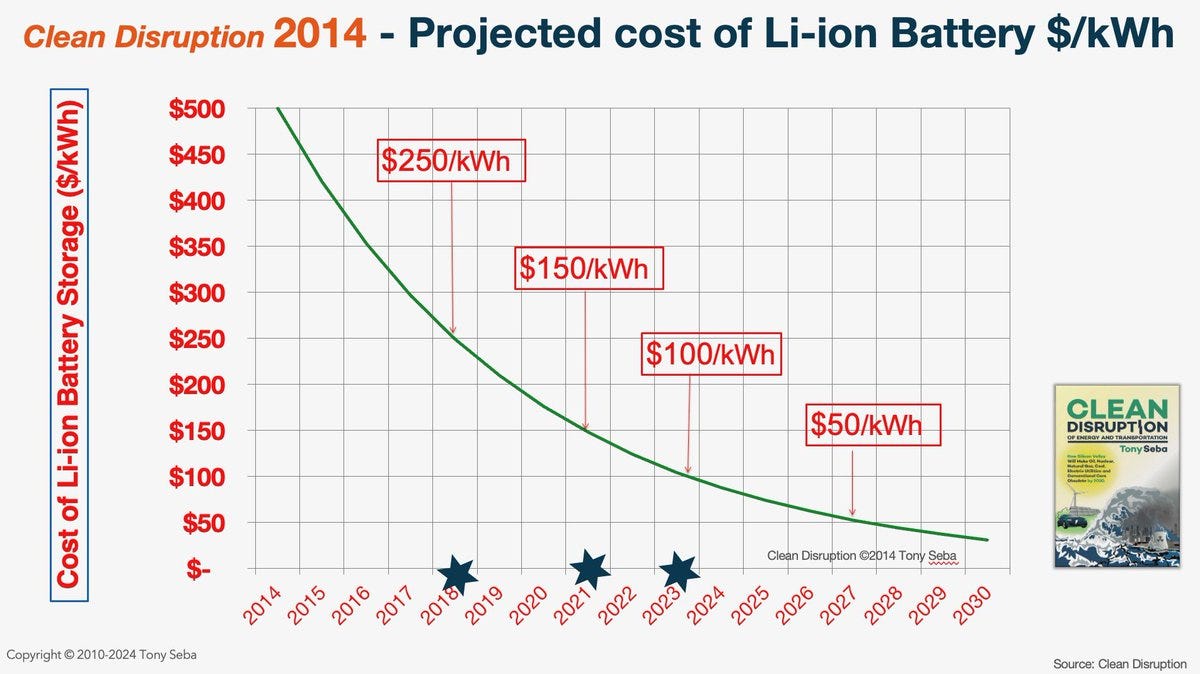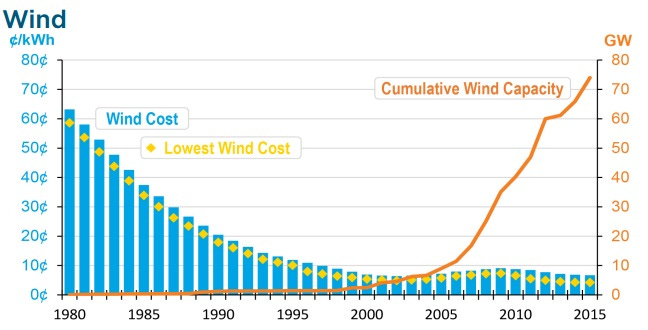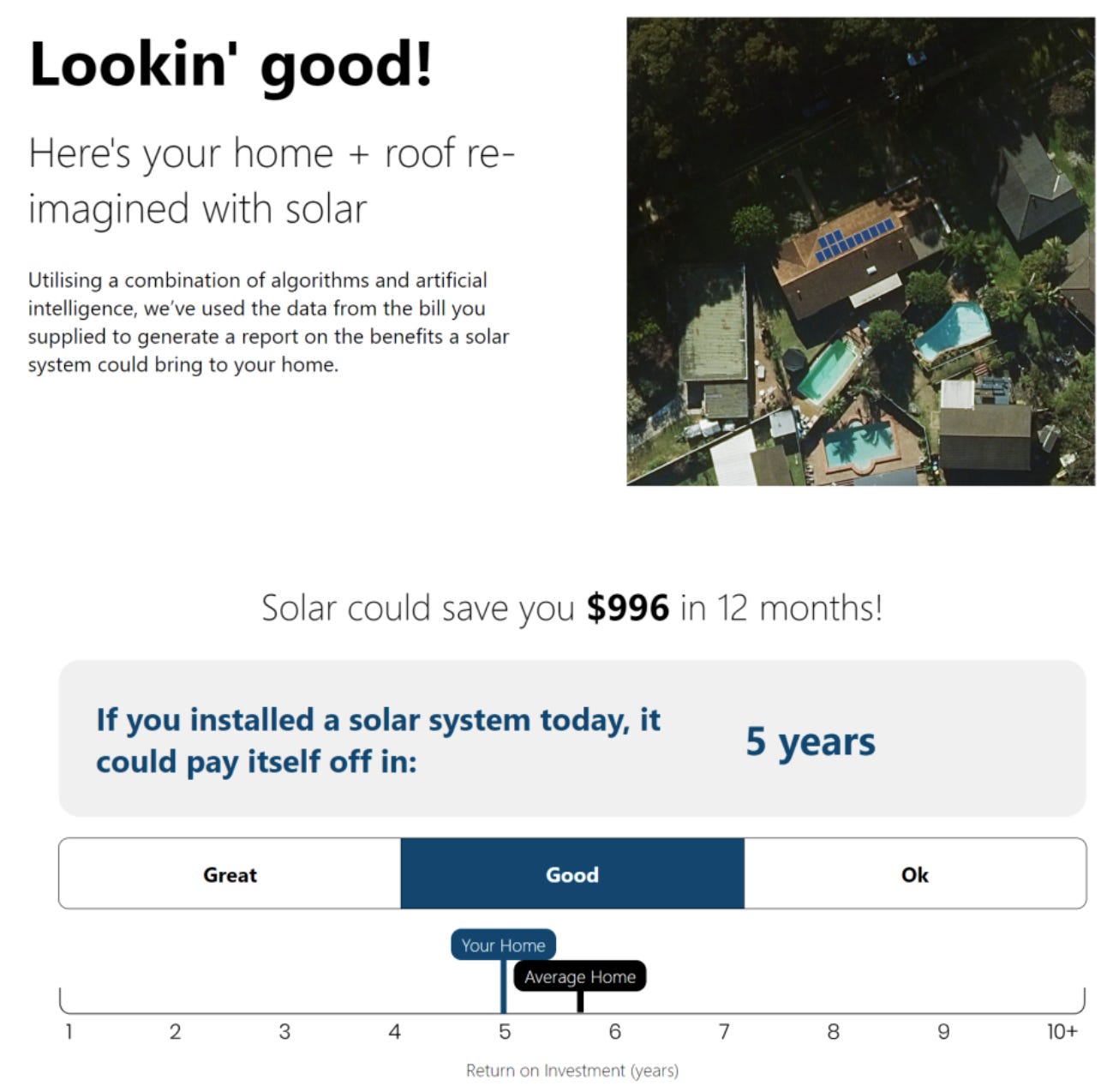Future of Energy: the amazing pace of progress in supply and demand and how two startups are positioned to WIN
Let’s see why a company that helps manufacturers design better solar panels, and a company that helps energy retailers and installers sell more solar panels, are poised to WIN in the future of energy.
To survive we need to identify when a strike has occurred, as if we had the benefit of hindsight. Three Strikes take both small and large companies down. Three Strokes can make startups and trillion dollar companies win, as long as they align to future disruptions and opportunities.
Last month I wrote about the future and introduced you all to Tony Seba and RethinkX. They have demonstrated again and again that the cost curves associated with the convergence of technology trends accurately predict the future.
They have also demonstrated that things change quickly: 10 years for the car to replace the horse, 13 years for precision fermentation to replace animal insulin. In fact, most major disruptions across all sectors happen in just 10-15 years:
Prediction: We are going to see the same disruption of oil, coal and gas by solar, wind and battery, in a similar timeframe.
“Governments like large-scale infrastructure, but are slow to plan and adapt today’s cities. The market moves quicker than Government, and home solar and home battery technology has unlocked quicker adoption by consumers and businesses than the Australian Government has planned for.”
- Ross Sharman, CEO, Accurassi
Let’s talk about the future of energy.
Energy is not just electricity. Electricity is only 1/3rd of all energy usage. The rest is transportation or industrial fuels, residential or commercial heating and some fossil fuels are used as feedstocks in the production of chemicals, plastics, and other materials, rather than for their energy content.
Source: Penn State
Global energy demand increases by 2% every year and 85% of energy comes from burning fossil fuels (oil, coal, gas) the scale of which is an obvious problem as per the below chart.
The world needs energy to thrive, and there is a direct correlation between energy and GDP:
For now lets focus on electricity and talk about:
Supply
Demand
The Grid
SUPPLY
Most of the world’s energy comes from burning coal and gas. For obvious reasons we need to move away from this fossil fuel supply to renewable sources (solar, wind, hydro, geothermal, nuclear).
“Renewables are taking over: In 2023, 80% of the new electricity capacity around the world was solar and wind projects.”
- Keith McIntosh, CEO, PV Lighthouse (SunSolve)
Solar/Wind/Battery
The winning combination of green supply looks like it is Solar/Wind/Battery, but lets come back to that later.
Carbon Capture (still controversial)
We already capture the energy that is produced from coal and gas, but we can also capture the carbon rich waste gas what is burned off and then sequester it (i.e. capture it, compress it into liquid, and pump it a long way underground, presumably to stay there for thousands of years - lets cross our fingers there are no leaks in the short term. No wonder this technology is still controversial).
Source: Watchwire
DEMAND
“In terms of electricity, we need to meet peak demand while not having too much spare energy when it’s not needed. Home solar and home battery technology help to do this in a number of ways. They decentralise energy production and storage and they enable people and communities to sell energy into the grid when it is needed while buying energy from the grid when there is an oversupply. If people are smart, they can buy energy cheaply and sell it at a profit and in doing so help the energy grid transition”
- Ross Sharman, CEO, Accurassi
Our planetary energy demand could use a lot less energy, but requires behaviour change from people and companies. The good news is that using less energy saves money, potentially quite a lot of money.
“Money is energy. If you look at GDP growth and energy consumption, it’s a very strong correlation” - Ross Sharman, CEO, Accurassi
The World Economic Forum reports that 36% of global energy is used in industry, essentially to make these five core materials:
steel
cement
paper
plastic
aluminium
Industry is already very efficient at using energy because as it is a major cost to them.
But if we can use less of these five core materials, we save the energy it takes to make them, and there are many opportunities to use less:
New office buildings are designed to last 100 years, but are usually replaced after just 40 years
Most buildings could use 30% less material with no loss of structural integrity
Skyscrapers could be made with steel beams that have a variable depth (more in the middle, less at the sides) using 25% less steel
Old buildings tend to be demolished, but we could deconstruct them instead and reuse the steel
Cars are usually only driven for a few hours per week, and usually only by a few people, yet most people own cars. See what I wrote about the future of transport
New cars can be built lighter, which uses less fuel (of any kind) to move them around
Etc.
THE GRID
Our centralised electricity grid has more or less stayed the same for over 100 years. Power is generated centrally and piped to where it is used. This is changing towards a decentralised grid as new technologies emerge and become economical.
Solar panels on peoples homes generate power where it is used (decentralised power generation).
Home or neighbourhood batteries store energy where it is needed (decentralised energy storage). Electric vehicles which are mobile batteries can move energy around the smart cities of the future transporting it from the suburbs into the cities.
Solar technology is getting increasingly more efficient and, in partnership with new storage technology, is replacing fossil fuels - especially coal base load (burning coal to generate electricity) and gas peaking plants (using natural gas to generate electricity, primarily during periods of peak demand).
The amount of solar needed to fulfil our demand is surprising small.
“You could actually power the entire United States with 100 miles by 100 miles of solar” - Elon Musk, CEO, Tesla
Then there is the argument about where to place the solar. Should it be in big farms or located on rooftops? The answer is probably both. In Australia over 30% of homes already have solar panels on their roofs and it is quick and cost effective to deploy more. In the US rooftop solar is twice the cost it is in Australia so solar farms would be a more attractive proposition.
“A recent study found that utility-scale solar was 3x cheaper overall than rooftop solar in the USA. In Australia, I expect the differential between utility-scale and rooftop is smaller.” - Keith McIntosh, CEO, PV Lighthouse (SunSolve)
However solar farms still need new grid infrastructure which is slow and expensive to deploy. So it might be better to deploy solar on rooftops (along with batteries) from a cost and speed perspective.
“Energy is going to be consumed closer to where it’s generated… there are huge savings in rooftop solar and home battery as opposed to solar farms.“ - Ross Sharman, CEO, Accurassi
I’ve got a feeling that somewhere in between what each of these three great CEOs are saying is the truth. It strikes me that a few facts are plain:
Fact 1 - the sun offers way more energy than we could ever need, we just need to harness it
Fact 2 - solar farms can capture and produce a lot of energy but still need to transmit that energy to where it is used
Fact 3 - capturing some of the suns energy on your roof, right where you use that energy, seems like a no brainer - especially if you can store it for night time
I tend to defer to the guys who have accurately predicted the future time and time again:
“The cost of generating energy via a decentralised supply chain will be less than the cost of energy transmission via the grid.” - Tony Seba, Co-Founder RethinkX
Solar/Wind/Battery
Let’s get back to this new and winning combination of green energy supply.
Each of these three technologies are becoming cheaper and more efficient.
Source: rethinkx.com/energy
BATTERY
Battery costs fell by 90% over the last decade and will drop by another 80% in the next 10 years.
In 2014 Tony Sebastian predicted the below cost curve for batteries, which have since come true.
WIND
Wind is variable and at the moment our energy grids can accommodate that, but when the proportion of wind in the grid increases it will become problematic. Offshore wind farms are more suitable and more consistent, but also more expensive.
The cost of land-based wind energy has dropped by 41% since 2008, while the capacity has tripled in the same timeframe.
In 2024, onshore wind farms are approaching the point of being economical, without subsidy.
Over the next 10 years the cost of wind power will drop by 43%
Source: US Department of Energy
SOLAR
In 2010 Tony Seba published an article in the San Francisco Chronicle that predicted solar costs would reduce by 80-90% over the next decade.
This came true and today solar is the cheapest form of energy in history. He predicts it to drop by another 70% over the next decade.
Source: Tony Seba presentation
Solar is so cheap now that steel producers are moving their factories to where solar energy is available (because energy is one of their biggest costs for producing this core material as we read above).
In 2024, in America 90% of the new power generation projects are solar or wind.
Solar and wind are the cheapest sources of energy ever. They will become 70%+ cheaper by 2030-2035. The combination with batteries is the new winning energy supply system.
This new system will have 3-5x more capacity than the existing energy system, will work almost everywhere in the world, including north of the Arctic Circle, and does not require seasonal storage.
Will this new system meet the required demand? Yes. Let Tony Seba convince you.
Tony Seba demonstrates that:
if we over-build solar we need fewer batteries
If we under-build solar then we need more batteries
He calls this the clean energy u-curve:
This u-curve leads us to super abundant, near zero marginal cost, clean energy.
That leads to investment returns.
It is modelled that a 20% additional incremental investment in green infrastructure returns 200%+ more energy. Nothing in our existing energy supply chain comes close to this type of investment return.
That is why things will change, fast.
Source: Tony Seba presentation
Mainstream analysts get this stuff wrong. The predictions for solar technology from the US Energy Information Administration have been wrong by 30-40% every year for the last 20 years.
So if:
solar, wind and battery are the cheapest form of energy ever
they will get even cheaper
the current fossil fuel based energy supply system is going to be disrupted
this disruption will largely occur over the next 10-15 years
Then there is clearly huge opportunity space for all kinds of companies innovating the technologies of solar, wind, battery, a decentralised grid, the mobility of energy through electric vehicles, and much else.
There are two companies that I know in this space, both mature software companies in different areas of solar, both exceptionally well positioned to win as this future of energy plays out.
A few years ago I joined the Board of Accurassi to help them through some merger and acquisition opportunities. We eventually got a deal done with a company that has since been acquired by a large energy retailer.
“Our mission is to help get a solar panel on every roof. Energy retailers and solar installers use our Solar Seeker AI to enhances their sales via an interactive visualisation of a property where we model optimal solar and battery system for that household or business.” - Ross Sharman, CEO, Accurassi
With trend lines like these, there is a huge scope for startup activity in the energy sector. Another successful solar startup I am in touch with is PV Lighthouse who are developing their SunSolve software.
“SunSolve is an advanced simulation platform for designing and optimising solar cells and modules, and for predicting the energy yield from utility-scale solar projects.
It employs a precise simulation engine that models the solar physics comprehensively, from individual cells to full arrays, accounting for environmental factors and wavelength dependencies. Manufacturers and developers use it to rapidly prototype solar designs.
Our technology is used by the world's largest solar panel manufacturers and utility scale projects and our software has been referenced in over 100 academic papers.” - Keith McIntosh, CEO, PV Lighthouse (SunSolve)
SunSolve helps solar panel manufacturers design better panels.
Accurassi helps retailers and installers sell more panels.
In the present moment, where solar is the cheapest form of energy ever and a future where solar, wind and battery will undoubtably disrupt and replace the global fossil fuel energy supply chain, I have no doubt that both of these companies will win. Big time.
Good luck guys, and THANK YOU for spending decades building towards a sustainable energy future for all of us.
SK



















I really really hope green tech wins the future!
Salv, thanks for sharing.